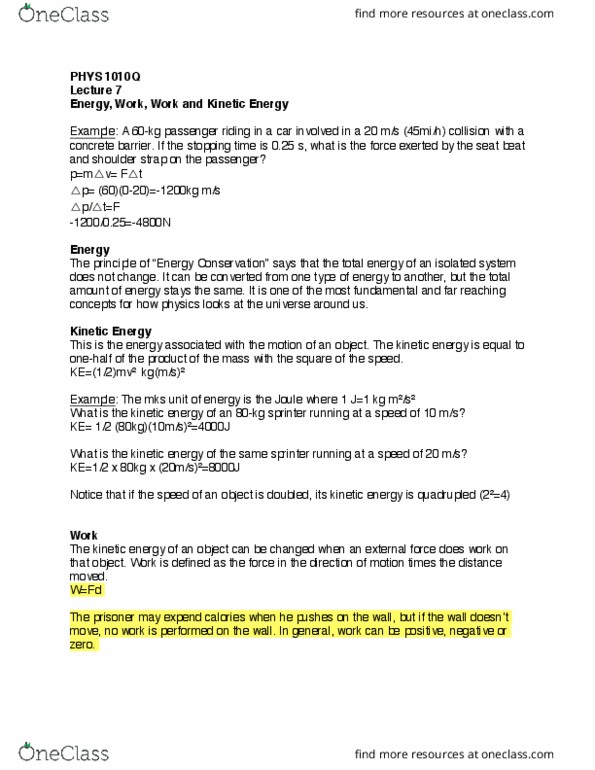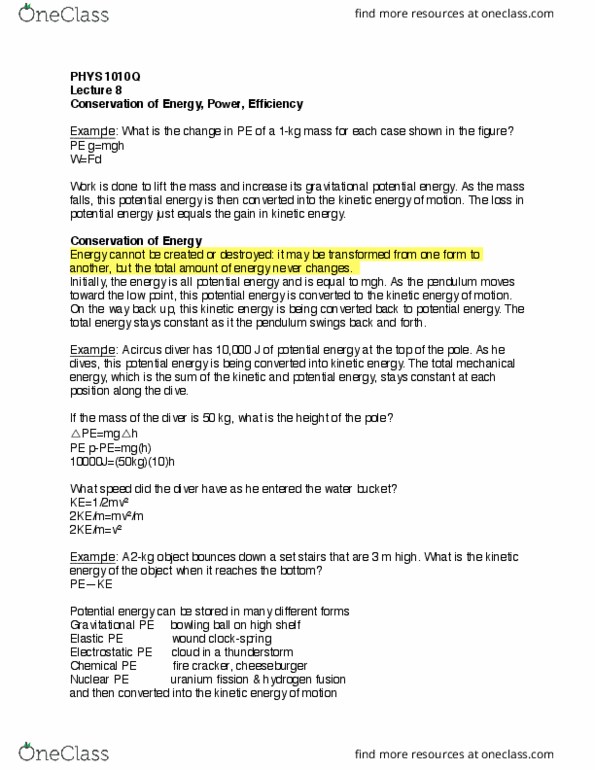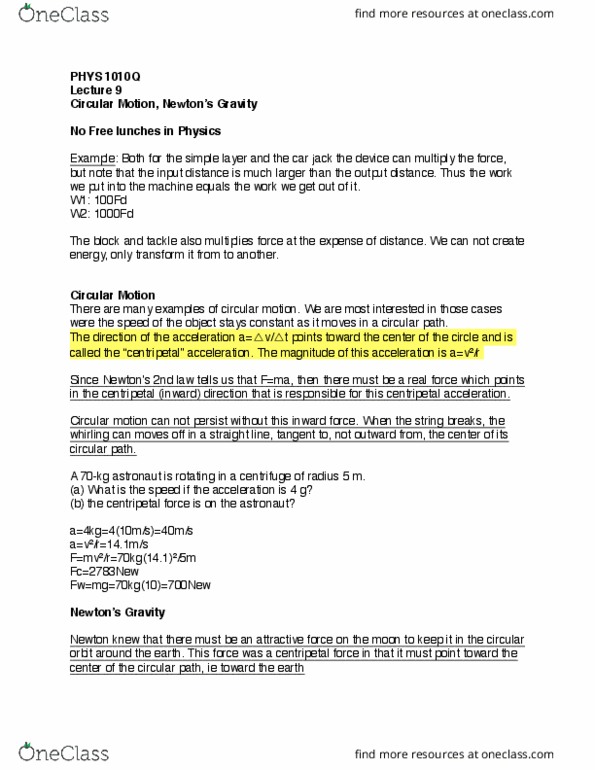PHYS 1010Q Lecture 8: Conservation of Energy, Power, Efficiency
PHYS 1010Q verified notes
8/14View all
Document Summary
Work is done to lift the mass and increase its gravitational potential energy. As the mass falls, this potential energy is then converted into the kinetic energy of motion. The loss in potential energy just equals the gain in kinetic energy. Energy cannot be created or destroyed: it may be transformed from one form to another, but the total amount of energy never changes. Initially, the energy is all potential energy and is equal to mgh. As the pendulum moves toward the low point, this potential energy is converted to the kinetic energy of motion. On the way back up, this kinetic energy is being converted back to potential energy. The total energy stays constant as it the pendulum swings back and forth. Example: a circus diver has 10,000 j of potential energy at the top of the pole. As he dives, this potential energy is being converted into kinetic energy.




